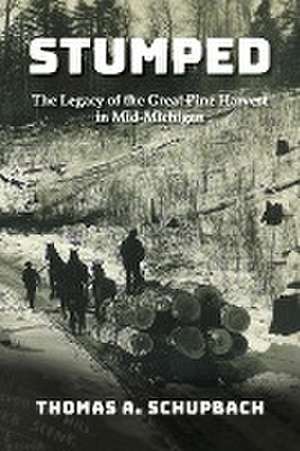STUMPED
Autor Thomas A. Schupbachen Limba Engleză Paperback – 5 sep 2023
Preț: 95.33 lei
Nou
Puncte Express: 143
Preț estimativ în valută:
18.24€ • 19.10$ • 15.09£
18.24€ • 19.10$ • 15.09£
Carte disponibilă
Livrare economică 17-31 martie
Preluare comenzi: 021 569.72.76
Specificații
ISBN-13: 9781961302105
ISBN-10: 1961302101
Pagini: 236
Dimensiuni: 152 x 229 x 13 mm
Greutate: 0.32 kg
Editura: Mission Point Press
ISBN-10: 1961302101
Pagini: 236
Dimensiuni: 152 x 229 x 13 mm
Greutate: 0.32 kg
Editura: Mission Point Press
Notă biografică
Thomas Schupbach has a lifelong interest in Michigan history. He has co-authored numerous articles in Michigan History Magazine and the Chronicle a quarterly publication of the Historical Society of Michigan. Tom is active in land conservation issues and is on the board of a regional Land Conservancy. He enjoys a wide range of outdoor activities and resides in Northern Michigan.
